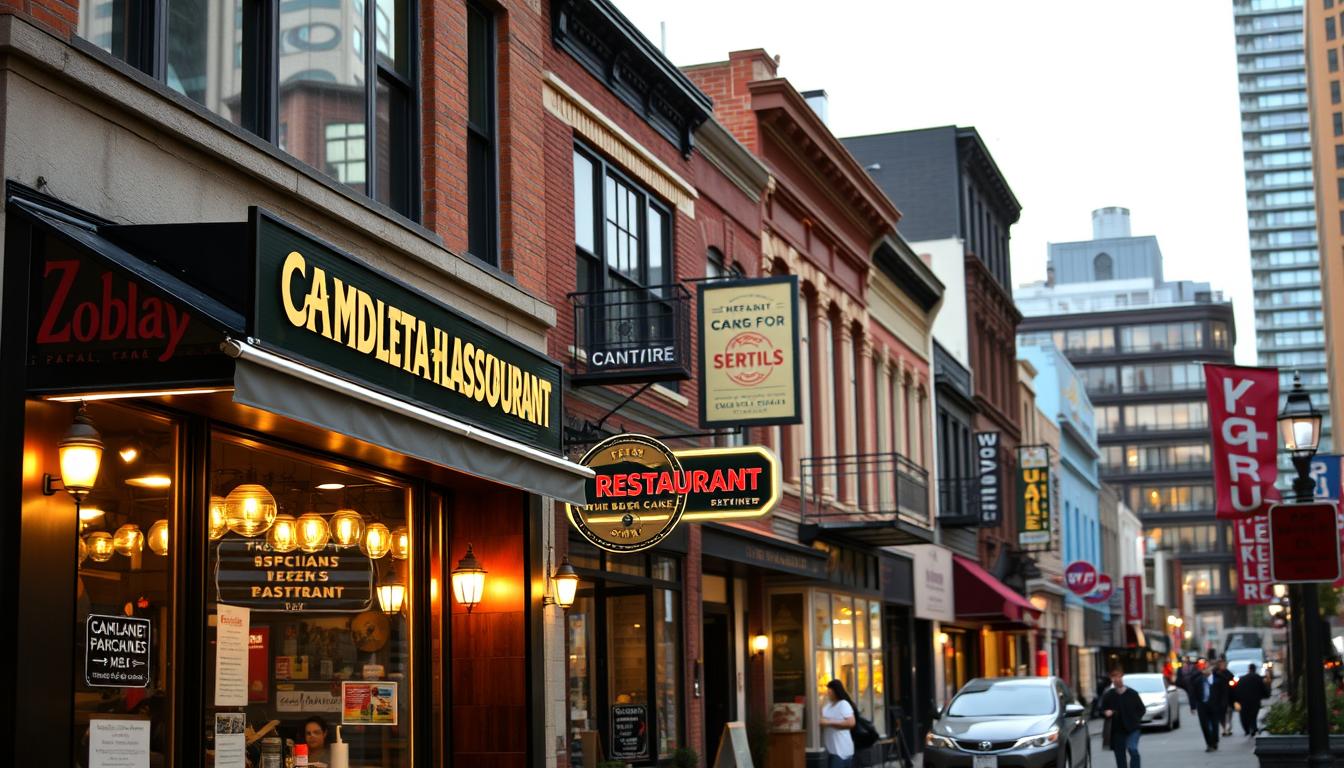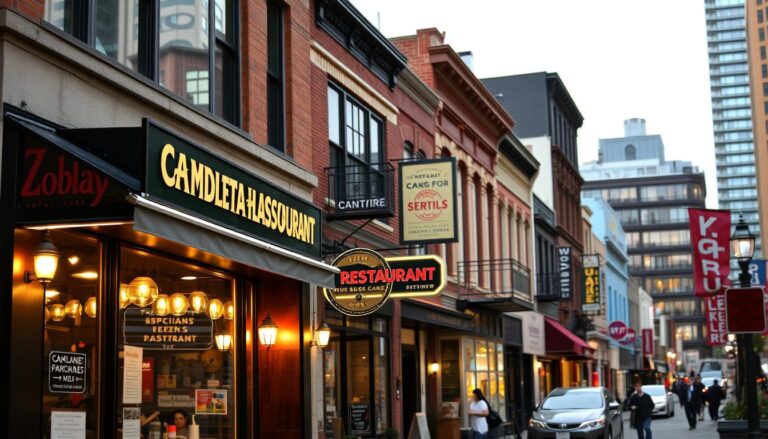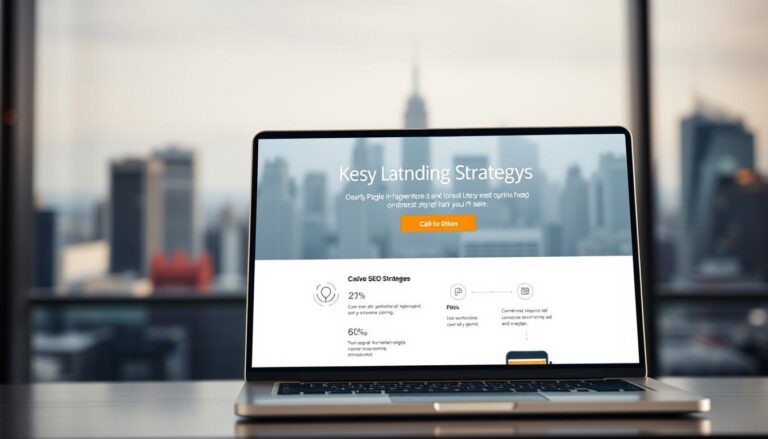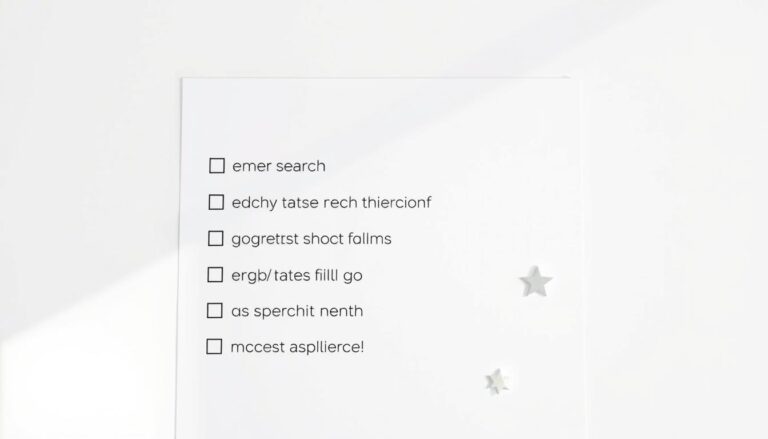Make your venue easy to find when people are hungry. Seventy-seven percent of diners check a restaurant’s website before choosing where to eat, and mobile searches drive quick visits—76% arrive within 24 hours.
This concise guide shows how a focused approach helps your business appear at the exact moment potential customers search. A fast, mobile-first website, optimized profile pages, and maintaining on-site ordering create measurable results like more direction requests, calls, clicks, and orders.
We favor simple, high-impact steps over marketing jargon. The three foundational wins operators use are clear: optimize your Google Business Profile, add cuisine-plus-city keywords on your homepage, and keep ordering on your own website to preserve engagement signals.
Read on to learn practical actions that grow discovery and convert traffic into repeat diners. Organic search works 24/7, building a compounding flywheel of traffic, reviews, and revenue without daily posting on social platforms.
Key Takeaways
- Focus on moments when customers search and act quickly.
- Fast, mobile websites directly boost visibility and revenue.
- Optimize profiles, target cuisine+city terms, and keep orders on your site.
- Simple, repeatable steps beat complex marketing plans.
- Organic search provides steady, cost-effective new customers.
Why local SEO matters right now for restaurants in the United States
More diners now use their phones to find and pick a place to eat within minutes. Seventy-seven percent of guests check a restaurant’s website before deciding, and 63% of Google searches in the U.S. happen on mobile.
That immediacy means appearing in Google Maps, the Local Pack, and local search results is not optional. When a customer searches, they often act right away: 76% of mobile searchers visit a business within 24 hours.
Visibility drives measurable outcomes: more direction requests, calls, reservations, online orders, and walk-ins. A complete profile and accurate hours convert intent into visits and immediate revenue.
- Capture high‑intent traffic—these users want to eat now, not scroll social media.
- Build momentum—accurate details, reviews, and updates compound over time and outlast brief promotions.
- Win dense markets—in crowded areas, small differences in relevance and info decide who gets chosen.
Think of search engine presence as the backbone of your acquisition engine. Mobile-first design and simple navigation are table stakes to keep that traffic and turn it into new customers.
Match search intent: How people actually find restaurants in local search results
Most diners start with a phrase like “best [dish] in [city]” or “near me.” That search pattern shows clear intent: they want options, hours, and a way to order fast.
Common intents include finding the top nearby option, confirming hours and location, browsing a menu, and ordering or reserving quickly.
Customers compare top search results by scanning photos, ratings, distance, and attributes in Google’s interface before they click through to websites or social media links.
- Example: Optimizing for “best birria in Miramar” helps your listing and site stand out.
- Micro‑moments like “open now,” “patio,” or “vegan” are key attributes search engines use to match users to the right place.
- Slow pages, PDF menus, or off‑domain ordering add friction and send traffic to aggregator apps.
Quick answers win. Send clicks to relevant pages with clear CTAs for ordering or reservations to improve time on site, pages per session, and conversions.
Audit your incoming search terms and map them to optimized pages to better satisfy intent and boost visibility in future search results.
Optimize your Google Business Profile for maximum visibility
A well-maintained Google Business Profile turns casual searches into real visits and orders. Complete, consistent information builds trust with search engines and customers alike.
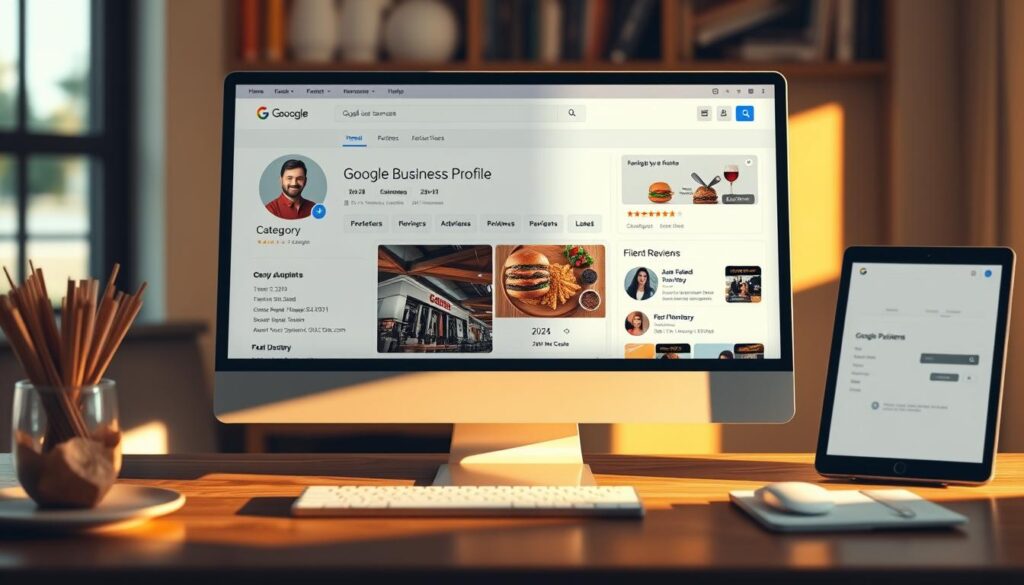
Perfect your NAP consistency and categories
Verify your exact Name, Address, and Phone number across Google, Yelp, TripAdvisor, and Facebook. Inconsistent details harm trust and can drop your search rankings.
Select a precise primary category (like “Mexican restaurant”) and add accurate secondary categories. That improves relevance in search results.
Photos, attributes, and menu: enrich the profile
Upload a steady stream of quality interior, exterior, and dish photos. Restaurants with photos get 42% more direction requests on Google.
Add attributes customers filter by—delivery, parking, wheelchair accessible, outdoor seating, and dietary options—and load your menu directly into the profile so dish queries can match.
Reservations, hours, posts, and review replies
Enable reservation and ordering links (OpenTable, Resy, or first‑party ordering) and keep hours, including holidays, up to date to avoid lost visits.
Use Google Posts to share specials and events. Respond promptly to every review—thank positives and address issues professionally—to boost engagement and credibility.
- Quick checklist: verify NAP, pick exact categories, add photos and attributes, upload menu, enable links, post updates, and reply to reviews.
- Use tools to monitor and push updates so your profile stays accurate as staff or offerings change.
On-page SEO essentials for your restaurant website
Treat each page as a mini ad: a tight title, a short pitch, and a fast load to convert visits into orders.
Title tags and meta descriptions
Give every page a unique title tag that names the cuisine and city (example: “Best Craft Brewery in Denver | Brand”).
Meta descriptions should summarize the page and include a clear call-to-action to improve click-through results.
Use H1 and H2 structure
One H1 establishes the main topic. Use H2 and H3 subheads to make the page scannable for people and search engines.
Publish menus as text
Replace PDFs and images with crawlable menu text. That speeds mobile loads, makes dishes indexable, and improves user experience on the website and site search.
Images and accessibility
Add descriptive alt text to photos to help assistive tools and to give engines context about dishes and media on the page.
- Internal links: connect menu, reservations, hours, and location pages.
- CTAs: keep Order Now and Reserve above the fold so customers act without friction.
- Footer: include NAP and an embedded Google Map to reinforce local signals.
Local SEO for restaurants: winning keyword and content strategy
A practical keyword and content plan turns casual searches into steady covers and takeout orders. Place intent-heavy phrases where they matter and back them with short, useful pages that answer real queries.
Target high-intent phrases on your homepage
Use “best [dish] in [city]” in the title and H1 to match how diners search. Examples: “best birria in Miramar” or “best Italian in Lakeside.” Keep the copy tight and action‑oriented.
Create neighborhood pages and timely posts
Build pages that mention landmarks, parking, delivery zones, and community ties. Publish brief posts tied to events and specials to earn freshness signals and backlinks.
Optimize for voice search with FAQs and schema
Write conversational FAQs that answer aloud queries: hours, “open now,” patio, and dietary options. Add LocalBusiness schema with NAP, menu, reviews, and reservation links so engines parse details and increase eligibility for rich results.
- Dish spotlights: link to menu sections to boost topical relevance.
- Content calendar: mix evergreen guides like brunch tips with event-driven posts.
- Quick wins: homepage H1, neighborhood pages, FAQs, schema.
This strategy improves rankings and builds authority by showing search engines you’re the neighborhood food option people trust.
Turn online reviews into a growth engine
Online ratings shape first impressions—turn them into a steady source of new diners.
Research shows 94% of diners pick where to eat based on online reviews. That makes visible feedback one of the highest‑impact assets a restaurant has.
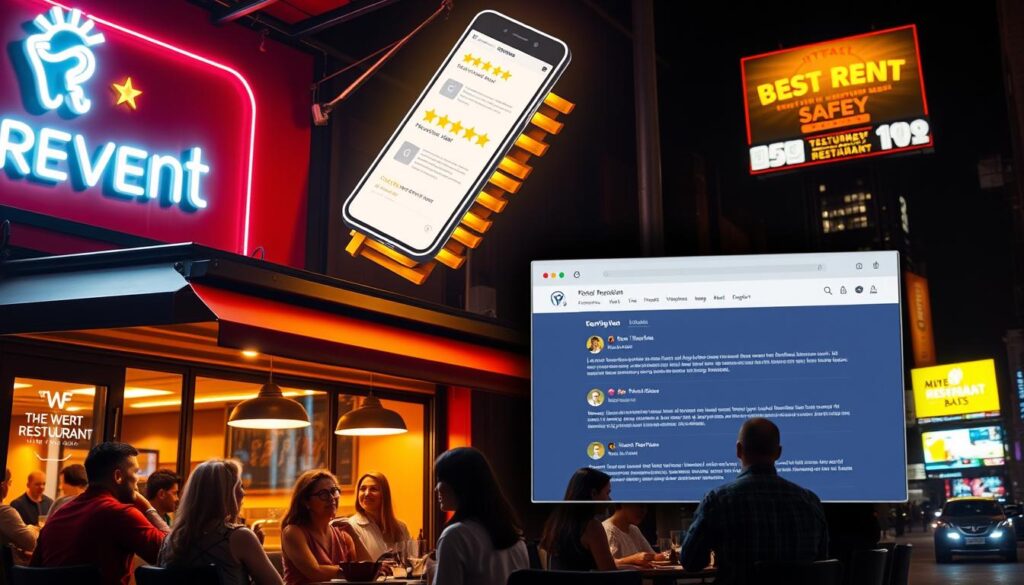
Collect more Google reviews with email and text prompts
Automate post‑order and post‑visit prompts via email and SMS to gather more feedback without taxing staff. Use QR codes on receipts and table tents to make leaving a review quick for in‑house customers.
Respond to every review to build trust and relevance
Reply to praise and concerns promptly. A thoughtful reply shows care, boosts trust, and signals engagement to search rankings and potential customers.
Highlight ratings and testimonials on your website to improve conversions
Feature star ratings and short testimonials on high‑intent pages like the menu and reservation page. Fresh, on‑site snippets reduce hesitation and lift click‑through and bookings.
- Monitor themes in feedback to guide menu tweaks, service training, and operations that improve results.
- Avoid incentivized reviews that violate platform rules; request honest feedback only.
- Cross‑share smartly—mention select reviews on social media and your website to extend reach and build credibility.
Convert discovery into revenue: online ordering and reservations UX
Make the path from search to sale as short as possible by keeping ordering and reservations frictionless.
First‑party ordering on your website keeps customers on your domain from menu browsing through checkout. Avoid off‑domain redirects labeled “Order Online”—they shorten session time and hide conversion data.
Keep OLO on your own domain to boost engagement signals
Implement first‑party ordering so sessions, transactions, and time on site all signal quality to search platforms. A completed on‑site transaction gives clearer results than one that finishes on a marketplace.
Streamline reservations with tools like OpenTable or Resy
Use reputable reservation systems and sync availability with real hours. Clear, persistent CTAs for Order and Reserve should appear across desktop and mobile to cut friction.
- Short checkout: minimal steps, guest checkout, and mobile payments to lift conversions.
- Make the menu scannable: categories, modifiers, and “most popular” items reduce decision time.
- Keep branding consistent between your profile and site to reassure customers and lower drop‑off.
- Use confirmation pages and follow‑up emails to request reviews or invite loyalty signups without disrupting the purchase.
Small UX wins—faster checkout, clearer CTAs, synced reservations—add up to more orders and repeat customers.
Citations and local backlinks that move the needle
Accurate citations and trusted backlinks act as endorsements that lift your site’s authority. Consistent NAP across Google, Yelp, TripAdvisor, Facebook, Foursquare, and key directories tells search platforms your restaurant is real. Photos and correct info increase direction requests and clicks.
Ensure listings match across major platforms
Audit and correct your business name, address, and phone everywhere. Small mismatches hurt trust and search rankings. Keep menu links and hours updated to reduce friction and bad reviews.
Earn high-quality backlinks through partnerships and media
Backlinks from local news sites, chambers, and food bloggers act like votes for your site. Pitch seasonal menu launches, charity fundraisers, or pop-ups as newsworthy angles. Provide a media kit with top photos, a short bio, and key links to make coverage easy.
- Audit citations across major directories and fix inconsistencies.
- Pitch stories and events to neighborhood media to earn mentions and links.
- Partner with nearby businesses for co-promos that generate website coverage.
- Track referrals and new backlinks to see which efforts drive clicks and covers.
Technical SEO and site performance that improve rankings and user experience
Mobile performance and clean code are the hidden drivers that lift visibility and conversions. Google uses mobile-first indexing and 63% of U.S. searches happen on phones, so design and test with mobile as the priority.
Mobile-first design and fast pages
Start with a responsive layout, simple navigation, and readable fonts. Prioritize touch targets and clear CTAs to improve the user experience on small screens.
Compress media with tools like TinyPNG and lazy load images. Defer non-critical scripts so pages load under two seconds and bounce falls.
Security, structure, and crawlability
Use HTTPS across the entire website and keep a logical URL structure. Maintain an XML sitemap and tidy robots directives so search engines crawl efficiently.
Schema and machine-readable signals
Implement LocalBusiness schema to mark up NAP, menu links, aggregate ratings, and reservation options. Machines parse this data for rich displays and improved results in a search engine.
- Test: run PageSpeed Insights and Lighthouse audits regularly.
- Accessibility: add alt text, ensure color contrast, and use readable fonts.
- Media: limit auto-play video and optimize images to protect load time.
Fast, secure, and well-structured sites help engines crawl more pages and reward better user signals, which drives higher rankings and more traffic.
Measure what matters and iterate for continuous gains
Focus measurement on actions—calls, clicks, orders—then iterate quickly. Track the metrics that tie search visibility to revenue so you can test changes and see real results.
Start with Google Business Profile Insights. Review views, calls, direction requests, and website clicks weekly to see how people find and act on your listing.
Use Google Analytics and Search Console
Set goals or events in Analytics to measure orders, reservations, and key CTA clicks coming from organic search traffic.
Use Search Console to find the queries that drive visits and to fix coverage or index issues fast.
Track keyword positions and review trends
Use tools like SEMrush or Ahrefs to monitor rankings and local pack visibility. Watch review volume, ratings, and comment themes to spot service or menu fixes.
Create a simple dashboard and test often
Combine traffic, conversions, calls, and directions into one dashboard. Try small changes—headline tweaks or menu order—then measure impact and iterate monthly.
Your 2025 action plan to boost visibility and drive more sales
,
Build a step-by-step system that converts finders into buyers through clearer pages and smoother ordering.
Start with a profile overhaul: confirm exact Name, Address, Phone, categories, attributes, photos, a text menu, hours, and reservation or ordering links.
Update your website in one sprint: unique titles with cuisine+city, clear H1/H2 structure, crawlable menu text, alt text, and Order/Reserve CTAs on every page.
Tackle content, reviews, citations, and backlinks, and implement first‑party ordering and a reliable reservations system to keep customers on your site.
Measure weekly with GBP Insights, Analytics, and Search Console. Assign owners, set timelines, and document the playbook so steady execution compounds into new customers, better rankings, and lasting revenue.
